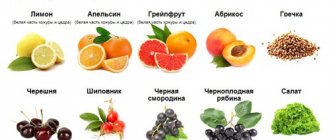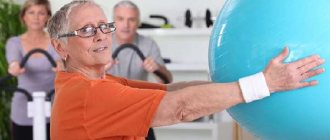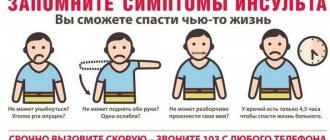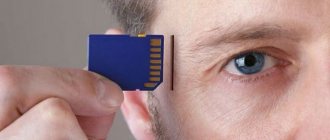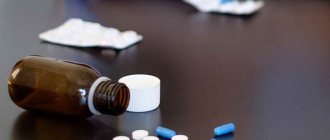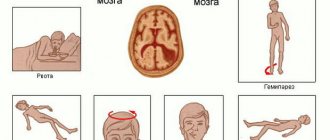What is a stroke
In medicine, stroke is understood as an acute cerebrovascular accident (CVA). The pathology develops as a result of blockage of the arteries supplying the brain by a blood clot. In this case, the diagnosis confirms an ischemic stroke, in which the brain tissue is deprived of blood supply. The cause of the pathology can also be a rupture of a vessel, which leads to hemorrhage into the brain. This is how a hemorrhagic stroke is formed. With it, the hematoma compresses the brain cells, which also leads to disruption of their function and death.
Stroke is characterized by focal and cerebral neurological symptoms. It can persist for 24 hours or immediately cause death of the patient. There are symptoms of pre-stroke that are precursors of stroke. Such signals include:
- noise in ears;
- numbness of the muscles of the limbs, face;
- sudden weakness on one side of the body for no reason;
- impaired coordination of movements;
- headache;
- memory impairment.
In the future, the pathology progresses and causes more serious symptoms. The person becomes sensitive to loud sounds and bright lights. Against the background of weakness and drowsiness, the patient develops:
- numbness of the limbs;
- visual impairment, hearing impairment;
- drooling, difficulty swallowing;
- dilation of the pupil of one eye;
- confusion;
- aphasia – speech disorders;
- a skewed smile, in which one corner of the mouth is lower than the other;
- pale or cyanotic skin;
- nausea and vomiting.
Types of memory
Depending on how long information is stored in the cortex, the ability to remember and store is divided into three types:
- Short-term memory is retained for several minutes when superficially reading, listening, or viewing new information. Knowledge is soon forgotten, but if you return to it, the bridges between neurons are firmly fixed in the cortex.
- Long-term memory is formed from short-term repetitions. In this case, information is stored for a long time in unlimited quantities.
- RAM is used for short-term work. After completing the task, knowledge is erased due to lack of need in the present and future tense.
As a result of cerebral circulation disorders, all types of memory are affected. The worst thing is when there is a loss of short-term memory - the basis of long-term information. The patient remembers what happened before the stroke, but it is not possible to create a chain of new knowledge. If long-term information is destroyed during illness, the patient does not remember people and events that preceded the stroke. Typically, older people experience weakened memory, and it is difficult to assimilate new knowledge.
Memory loss due to stroke
In a healthy person, both hemispheres of the brain complement each other. The right is responsible for emotional perception and normalization of the left half of the body, the left is for analyzing all incoming information and stabilizing the functioning of the right side. Memory is the ability of the brain to record and retain necessary information and delete unnecessary information.
Such processes are ensured by complex neural connections that entangle the cerebral cortex. They connect nerve cells to each other. When memory works with neural connections, the following processes occur:
- the formation of new connections when a person remembers information;
- activation of existing connections if a person reproduces what he already knows;
- destruction of connections when information becomes unnecessary and a person forgets it.
With a stroke, there is a decrease in the intensity of blood flow. As a result, certain areas of the brain lack oxygen and nutrients. This negatively affects the functioning of neurons. As a result, existing neural connections are destroyed, and new ones are difficult to form. This is how memory loss occurs after a stroke. The types and volumes of disorders are determined by the age and gender of the patient, the area of brain damage and the presence of concomitant pathologies. The causes of the stroke itself include:
- diabetes;
- atherosclerosis;
- hypertension;
- cardiac dysfunction;
- alcohol abuse, smoking;
- cerebral aneurysms;
- obesity and overeating;
- long-term use of hormonal contraceptives;
- bleeding disorders.
Possible violations
For more effective recovery after a stroke, you need to know what type of memory was affected. It is divided into types depending on the duration of information storage:
- Short-term. Responsible for the perception of primary information, including pictures, names, places. If a person does not repeat this knowledge, then short-term memory erases it. When the received data is returned periodically, the neural connections created are strengthened. As a result, short-term memory transfers information to long-term memory. This is how memorization happens. When short-term memory suffers, a person remembers everything that happened to him before the stroke, but cannot perceive new information. Recovery in this case is the most difficult.
- Long-term. Responsible for long-term storage of data and its unlimited reproduction if necessary. If long-term memory is affected, the patient does not remember everything that happened to him before the stroke, but is able to remember new information. Recovery in this case is easier due to walks in familiar places and associations. This will help restore verbal memory.
- Operational. In this case, information is erased after a person performs a certain sequence of actions. At the end of the task, the data is forgotten as unnecessary.
The thalamohypothalamic complex is responsible for genetic memory, the frontal lobes of the brain are responsible for verbal-logical memory, and the limbic system is responsible for acquired skills and habits. Depending on the location of the focus of cerebral tissue ischemia, a person may experience different types of disorders. More often, the patient suffers from one type of problem with this cognitive function. Although in some patients there is an overlap of several disorders. Main types of memory disorders:
- Dysmnesia. This is a disorder in which the ability to remember is reduced and the reproduction of knowledge worsens.
- Intrusive memories. They represent the involuntary appearance in the mind of figurative details of past events.
- Hyperfunction of memory. Accompanied by the fact that memories become brighter and more vivid. A person remembers details that he didn’t even know about before.
- Paramnesia. It is a disorder in which false memories appear, past and present are confused, as well as real and fictional.
Article on the topic: Analogues of the drug Anaprilin: instructions for use
Dysmnesia is divided into several more types: hypermnesia, hypomnesia, amnesia. In the first case, the processes of forgetting unnecessary information are disrupted, in the second, difficulties arise in remembering birthdays and phone numbers, in the third, certain events disappear from memory. Amnesia has several subtypes:
- Retrograde. This is a loss of memory for events that preceded the disease. A person remembers more ancient events and lives, for example, a wedding day.
- Anterograde. A person forgets events that occur after a stroke. With anterograde amnesia, the patient, even after meeting, does not remember the name of the doctor, the day of the week, or algorithms for simple actions. The patient cannot remember the faces and names of relatives.
Rehabilitation methods for cognitive impairment
Memory restoration after a stroke, as already noted, involves two main directions: the use of drugs and training to improve memory.
Medicines
Medicines to improve memory and cerebral circulation help normalize neuronal metabolism, normalize and accelerate recovery processes. We are talking about the following pharmaceuticals:
- Actovegin. A kind of “panacea” for all types of brain disorders. It is recommended to use it in the form of intramuscular injections, so the effect will be maximum. Normalizes the condition of nerve tissue, accelerates cell healing and the creation of new neural connections. The drug is especially effective when the patient’s cerebral structures were in a prolonged state of oxygen starvation.
- Piracetam. Increases memory, eliminates temporary loss of ability to remember and reproduce information.
- Glycine. A cheap but effective remedy that activates the work of cerebral structures.
Contrary to many recommendations on the Internet, effective folk remedies simply do not exist, and it is not recommended to waste time on them.
If there are no contraindications, biologically active food supplements can be used. They are prescribed temporarily, like drugs, but are used for a longer period of time compared to medications. Suitable, for example, are Huato Boluses. This supplement has proven itself well.
How to restore memory after a stroke
The recovery process after a stroke can take a long time. It all depends on the area of the affected parts of the brain, gender and age of the patient. The speed of recovery is also determined by how quickly and professionally the patient received assistance. Some patients experience improvements within a couple of weeks, while others require 2-3 months or even 1 year for rehabilitation.
Memory has a complex mechanism, but even minor nuances can contribute to its restoration. Early rehabilitation begins from the first week of hospital stay, if the victim has a clear consciousness. Memory restoration after a stroke is carried out by a neurologist, psychologist, and speech therapist. Basic methods:
- drug therapy with drugs that improve blood supply and brain function in general;
- performing special exercises (logical, finger, game, speech).
An important condition for successful recovery is the support of loved ones. The positive effect of therapy directly depends on instilling confidence in the patient. The patient’s relatives need to adhere to several recommendations:
- When communicating with a patient, speak slowly and in short phrases, since it is difficult for a person to perceive lengthy and rapid speech.
- Don’t rush and try to finish the patient’s sentences every time and show your impatience.
- Do not leave the person unattended, involve him in any type of activity - drawing, putting together puzzles, participating in board games.
- Constantly encouraging the patient to talk, even if the person answers questions with a nod, this also helps restore communication skills.
- Stimulate the victim by giving simple speech perception tasks, for example, by showing and naming objects in simple pictures.
- Provide a favorable, friendly environment. When negative emotions and bad mood are shown by relatives, the patient may withdraw into himself, and isolation can lead to depression.
- Maintain a daily routine. The patient should go to bed at 8-9 pm. This way, the body will rest better, which will ensure faster memory recovery after a stroke.
At home
The main recovery process is carried out at home. The approach to rehabilitation must be comprehensive. Every day you need to perform a set of exercises with the patient. It is important to tackle recovery step by step, starting with simple tasks and gradually moving on to more complex ones. If you suddenly begin to perform difficult tasks, a person may become tired, which will only aggravate the condition. Memory restoration after a stroke at home includes the following activities:
- conversations with a person about lifestyle, hobbies, traditions, interests;
- reading and memorizing poems or songs, memorizing the alphabet;
- learning foreign languages;
- walks in familiar places;
- speech therapy sessions, including music therapy, which helps memorize lines of songs and further develop speech.
Before starting recovery, you need to try to determine what objects, faces and events that happened before the stroke the person remembers. This way you can build an associative chain that will help in the process of returning memory. For example, you can link the memorization of daily actions to breakfast, lunch or dinner. There are other effective methods:
- Forced repetition. Since a person partially loses his memory, it will be useful for him to constantly reproduce his skills. Each time you need to add new details to the process, thereby expanding the data to be memorized.
- Formation of visual images. A person who has suffered a stroke has a special concentration on details. In this case, it is useful to exaggerate the significance of some event from the past. This will force the person to remember various moments that were not so vivid before the attack of stroke.
Exercises
The main method of memory restoration is its training using a special set of exercises. They are aimed at remembering new information. Exercises also help bring back memories of the past. The following methods are effective:
- Finger games. The essence is to bend your fingers in the process of memorizing short rhymes. In this case, it is better to use the left hand for right-handers and the right hand for left-handers. This development of fine motor skills will more actively engage neural connections in the brain. In addition to bending your fingers, you can use clenching your palms into fists, stroking or rubbing your hands, and clapping your hands. The patient’s task is to remember the order of actions with certain words.
- Associative thinking. His training consists of describing to the patient each sign of an object and drawing up a connecting chain between them. For example, if a person does not remember whether he turned off electrical appliances at home, he can remember the following series: iron, light bulb, TV, front door. Approaching the last one, the patient will remember that he did not check the instruments.
- Logical games, for example, in cities. This is a simple but effective method of restoring mental activity. You say the name, and the patient must give his city, the name of which will begin with the last letter of your word. It may not work right away, but you need to be patient.
- Memorizing verses. Every day you need to learn 1-2 lines from simple works.
Article on the topic: Increased stomach acidity - causes and symptoms in children or adults, methods of treatment at home
Music therapy
This technique is part of the speech therapy complex of treatment. The patient needs to play songs that are familiar to him. The patient must remember their words and then sing along. This procedure also helps in restoring speech. In addition, listening to music has a positive effect on your overall emotional state. At first, the patient may have difficulty remembering and reproducing text, but over time, speech skills and memory will gradually recover. In addition to music, you can give the patient to listen to audio books.
Drug therapy
An integral part of rehabilitation after a stroke is drug therapy. It is aimed at improving blood supply to the affected areas of the brain and reducing intracranial pressure. Taking medications ensures restoration of nerve cell metabolism and improvement of psycho-emotional background. Medicines are also taken to reduce nervous excitability. To achieve these goals, the following drugs are used:
- Actovegin;
- Glycine;
- Biotredin;
- Piracetam.
The latter drug is available in the form of capsules, tablets and injections for intramuscular or intravenous administration. They are based on the active substance piracetam, which has psychostimulating and nootropic effects. It increases a person’s ability to learn, increases mental performance, and improves memory. The main advantage of Piracetam is the normalization of neural connections in both hemispheres of the brain. Among the disadvantages of the drug, a large number of possible side effects can be noted.
Treatment of post-stroke conditions requires a daily dosage of Piracetam of 4800 mg. This dose is also used for parenteral administration. After 10-15 days of such use, they switch to tablet forms of Piracetam. General indications for treatment with this drug:
- comatose states;
- dementia;
- cortical myoclonus;
- sickle cell anemia;
- brain injuries;
- vertigo;
- psychoorganic syndrome;
- Alzheimer's disease.
Another effective drug is Actovegin. After a stroke, it is used in the form of tablets and injection solution. Their main component is a deproteinized hemoderivative from calf blood. Under the influence of this substance, the energy resource of cells increases and tissue resistance to hypoxia increases, which is one of the causes of stroke. Schemes for using Actovegin:
- The solution is administered intraarterially, intravenously or intramuscularly. In case of disturbances in the blood supply to the brain, a dosage of 10 ml is prescribed for 2 weeks.
- The average dose of tablets is 1-2 pcs. 3 times a day for 1-1.5 months.
Plus Actovegin is well tolerated. Judging by the reviews, the drug rarely causes side effects. The downside of Actovegin is its high cost (about 1,500 rubles for 50 tablets). Indications for use of this medicine:
- ischemic stroke;
- dementia;
- lack of blood flow in the brain;
- traumatic brain injuries;
- diabetic polyneuropathy;
- angiopathy;
- trophic ulcers.
Drug therapy
The degree of cerebrovascular accident depends on the location and size of the lesion and the timeliness of treatment. The sooner restoration measures are started, the greater the chance of regaining memory. Most patients are able to recover partial loss of mental abilities. During the rehabilitation period, vasodilator drugs are used:
- Piracetam (Nootropil), by expanding cerebral vessels, increases blood circulation in the cerebral cortex. The mechanism of action is to facilitate the transmission of impulses between neurons. In addition, the drug reduces blood viscosity and prevents the formation of blood clots. Nootropil prevents vascular spasm, strengthening their walls. After a course of treatment, concentration increases, memory improves, and learning becomes easier.
- Phenotropil increases blood circulation in the cerebral cortex. According to the mechanism of action, it promotes the activation of neurons, increases the speed of transmission of nerve impulses, and improves connections between the hemispheres.
- Aminalon contains gamma-aminobutyric or hydroxybutyric acid, which restores the metabolic processes of the cortex. Promotes the absorption of glucose by brain tissue, enhances metabolism, facilitating the transmission of impulses between neurons. In addition, the medicine stimulates the psycho-emotional state, reducing depression. In addition, it helps restore limb movement and speech abilities. The drug also stabilizes blood pressure and reduces blood glucose levels. The complex effect of the drug helps restore memory loss.
- Glycine improves metabolic processes in the brain. It has an antidepressant effect and reduces nervous tension. As a result, the pills reduce internal aggression. A person becomes less conflicted and more sociable. In patients after cerebrovascular accident, Glycine reduces depression and normalizes sleep.
Important! Drug therapy after a stroke is used for many months. Some patients take nootropics for life.
Medicines restore memory in combination with physical activity and special exercises for memory training.
How to improve memory using folk remedies
Folk remedies can be an addition to drug therapy and exercises, but you should consult your doctor about their use. Alternative medicine recipes only improve the patient’s overall well-being. The following remedies are effective in this regard:
- You need to squeeze the juice out of the dandelion. It is consumed 25 ml before each meal.
- Brew a cup of green oat sprouts with 5 cups of boiling water. Boil the product and cook until the volume of liquid is reduced by half. Add 4 tsp. honey Pour in milk so that the volume of the broth is again about 5 glasses. Bring to a boil again, then remove from heat. Use the entire decoction throughout the day.
- About 2-4 tbsp. l. Pour boiling water over crushed rowan bark. Pour the liquid into a saucepan, put on fire, simmer for 10 minutes. Let the product brew for 6 hours, strain. Drink warm, 1 tbsp. l. up to 3 times a day.
